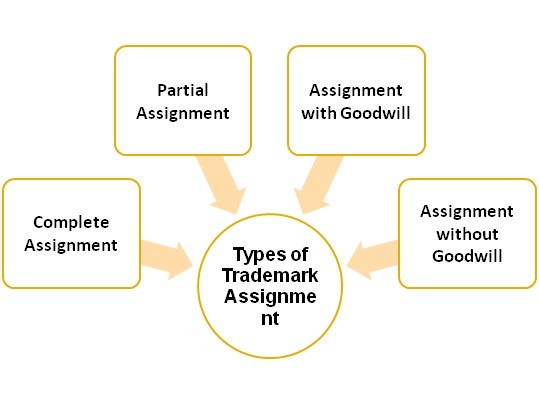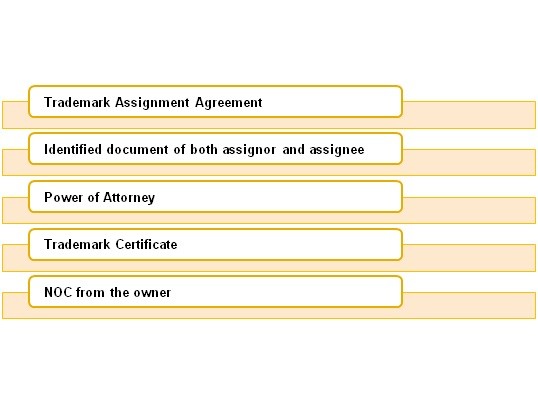A Trademark is an intellectual property, the same as a physical property like land. Just like an owner of land has the right to sell or transfer his/her property, in the same way, the owner of a trademark also has the right to do the same to his/her trademark. Every owner of a trademark owner who wishes to transfer his/her right with regard to its trademark can do so either by trademark licensing or trademark assignment which is governed under the Trademark Act, 1999.
In this article, we will discuss about how a trademark owner can transfer his ownership to another person by the way of trademark assignment.
Meaning of Trademark Assignment
In simple words, a trademark assignment is a process through which ownership and rights of the trademark are transferred to any other person. A Trademark assignment takes place between the parties only after executing an agreement called Trademark Assignment Agreement. Moreover, the partial assignment of a trademark is known as trademark licensing.
As per Section 37 of the Trademark Act, 1999 "the trademark assignment is a transfer of an owner’s right, title, and interest in a trademark or brand mark. In a case where the trademark is registered, the assignment is required to be recorded in the trademark register."

Kinds of Trademark Assignment

Now we shall discuss the types of trademark assignment one by one:
Complete Assignment
In such type of assignment, complete rights are transferred to the second party in relation to the registered trademark. The owner of the trademark in this case transfers all the rights to the other person to earn royalties out of it. The owner of the trademark will not retain any right on the trademark, once he transfers the trademark through an agreement to the second party.
For eg: Mohit, owner of "ABC", sells his whole association through an agreement to Karan. Post this transfer, Mohit will not retain any rights in relation to "ABC".
Partial Assignment
In the case of partial assignment, the ownership of the trademark is transferred only in regard to certain products/services as pre-decided by both the parties through the Trademark Assignment Agreement. In this case, the owner of the trademark can retain a few of the rights and restrict the transfer of trademark to specific products and services only.
For eg: Mohit, the owner of bread and butter as a whole, transfers proprietary rights solely in relation to the bread and retains the rights over the butter. This transfer is known as a Partial Assignment.
Assignment with Goodwill
In this category of trademark assignment, the owner of the trademark transfers the rights of trademark in addition to the value of the trademark associated with it. When the assignment with goodwill takes place, then the rights and value of the trademark are given to the second party to use the proposed mark in relation to the products and services.
For eg: if the owner of a brand "Amul" which deals with dairy products sells his brand to "X", then "X" will be able to use such brand with respect to its dairy products and other products which it manufactures.
Assignment without goodwill
The category of "Assignment without goodwill" is also known as Gross Assignment. In this case, the owner of the brand, while transferring the trademark, restricts the right of the buyer to use such a brand for the product which is already being used by the original owner. Hence, any goodwill attached to such a brand with respect to the product already being sold under such a brand is not transferred to the buyer.
For eg: if the owner of the trademark "SAMSUNG" uses it for producing and marketing of Mobile phones and decides to assign it to another party without any goodwill, then another party can use the trademark for the products apart from the mobile phones.
Advantages of Trademark Assignment
There are several advantages of Trademark Assignment. Some of them are listed below:
1. Security for assignor and assignee
To carry on a genuine and valid trademark assignment, a Trademark Assignment Agreement is executed between both the parties that includes the assignor and the assignee. Such legal agreement acts as a valid proof and is admissible as an evidence in court, in case any dispute arises between both the parties. Thus, it secures the rights of both the assignor and assignee.
2. Expansion of Business
Assignment of trademark helps in business expansion as both the assignor and assignee get the right to collaborate the brand with their respective businesses.
3. Pre-established brand
You don’t need to invest in time, money or labour in creating and marketing of your brand if you got the right on an already established well known brand through the process of trademark assignment. Assignee do not require to create a new brand and take the pain in getting it registered.
Pre - Requirements for a Trademark Assignment
There are certain requirements for validating the process of trademark assignment in India. They are as follows:
• Assignor/Owner of Trademark must have the intention and consent for Trademark Assignment
• Assignment of trademark must be in writing
• There must be two identifying parties - Assignor and Assignee
• Valid Identified documents of both Assignor and Assignee
• Execution of valid Trademark Assignment Agreement
• Proper identification of the marks
• Proper consideration
• Including the transfer of trademark in goodwill
Documents Requirement for Trademark Assignment

Procedure of Trademark Assignment in India
To apply for trademark assignment, follow the below step by step process:
1. Application for Trademark Assignment
First of all, an application for a trademark assignment must be made by the Assignor or Assignee or by both. Both of them can also jointly make a request.
2. Filing of TM-P form
In the next step, it is necessary to file the TM-P form by furnishing all the required details of the transfer
3. Submission of Documents
After filing up TM-P form, you need to submit all the necessary documents required for Trademark assignment to the Registrar of the Trademark within 6 months from the date of acquisition of proprietorship.
4. Processing of the application
Once the application of assignment is successfully submitted along with the necessary documents, the application will be processed.
5. Advertisement of the Assignment
As soon as your application is specified, applicant have to make an advertisement for the assignment in such manner as directed by Registrar. Also, submit the copy of the direction of Registrar and advertisement of the assignment in the office of Registrar.
6. Approval of the Assignment
On receiving of the trademark assignment application along with the documents, Registrar will verify the application and after proper verification, if Registrar satisfies, then he will approve the application. However, Registrar will register the assignee as the proprietor of the trademark. The Registrar will enter the details of the assignment in the register.
Wrapping Up
The assignment of trademark involves good planning from the part of both assignor and assignee. The trademark assignment opens a lot of opportunities for the parties allowing the assignee to get access over the brand with the consent of the original owner. Further, the trademark assignment keeps the brand alive.








 CAclubindia
CAclubindia
